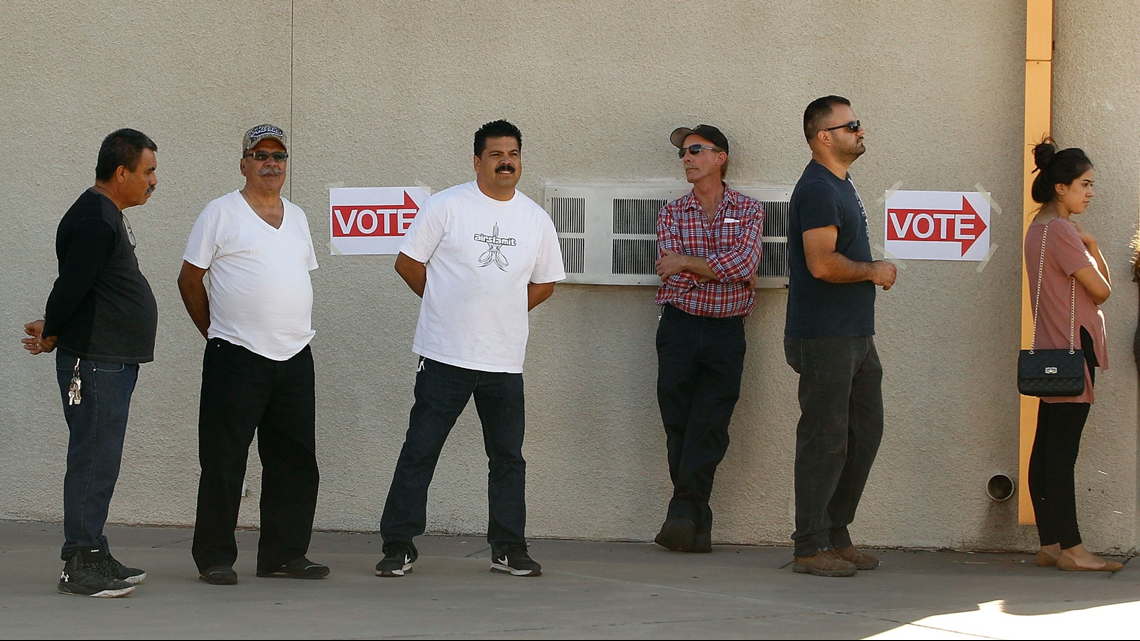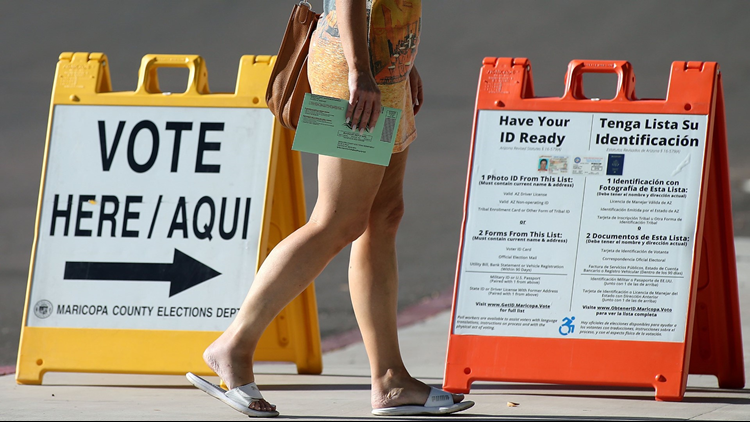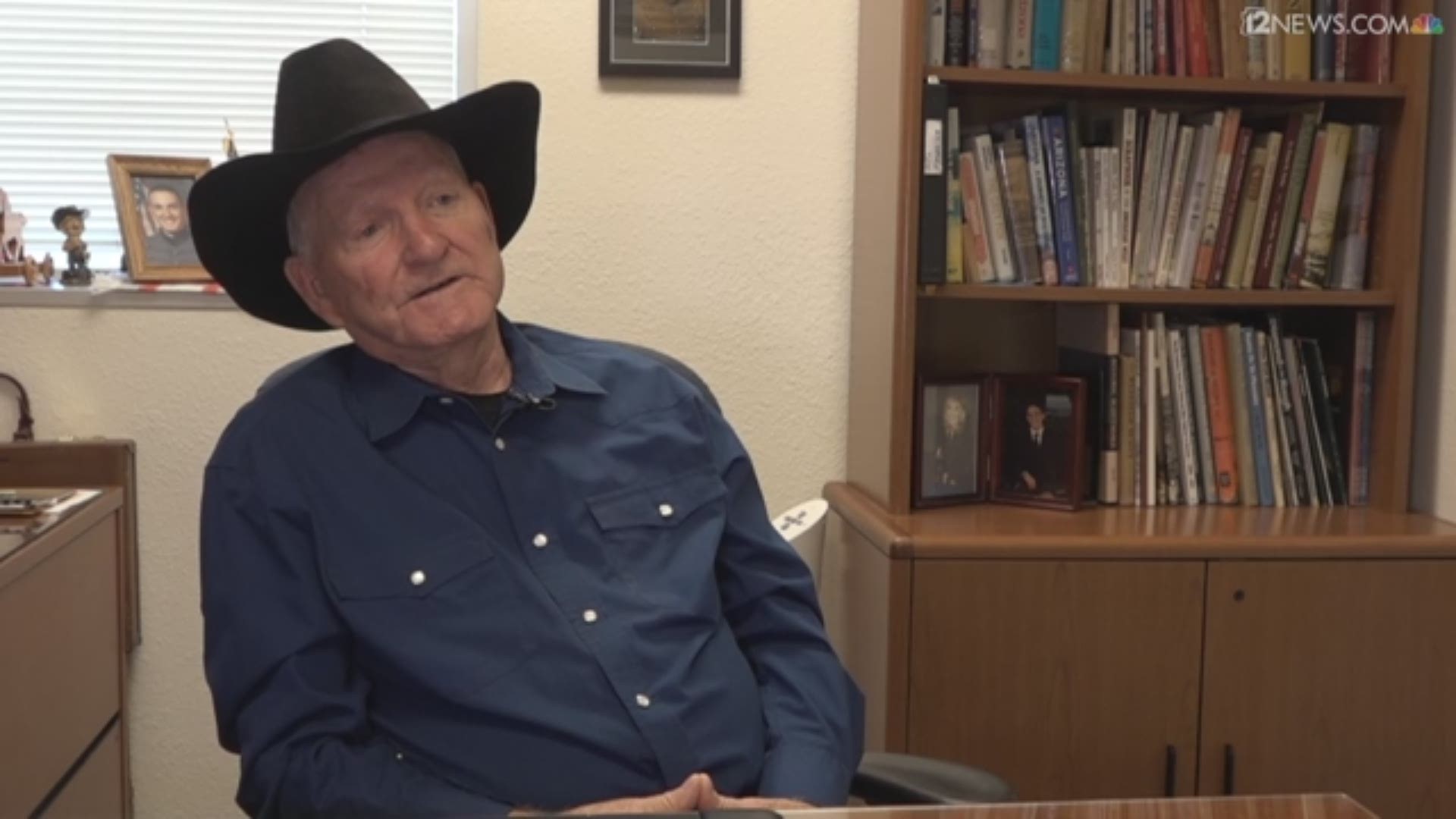PHOENIX — More than 29 million Latinos were eligible to vote in November and the group’s enthusiasm to participate in midterm elections was higher than ever before, according to the Pew Research Center.
National exit polls estimate 11 percent of people who voted on Nov. 6 were Latino. They may have been the reason why a young educator who ran as a Democrat was elected as Arizona’s top education leader. They may have been responsible for sending Kyrsten Sinema to the U.S. Senate, the first woman to represent Arizona on the floor and the first Democrat in three decades. Latinos may have even been the reason why Maricopa County voted purple.
Here’s what we know about the Latino electorate that can support those claims. According to polls and research done by the Pew Research Center:
- Latinos care about education
- Latinos lean Democrat
- Latinos are growing
So was this the election the Latino electorate changed the course? Not really. Turnout in Arizona for the 2018 midterms was historic, but it’s too early to know how many Latinos voted and the state, overall, is still Republican red.
The results of Arizona’s 2018 midterms, however, may show us the first steps of what experts have predicted for some time now. Arizona is in the early stages of a transition that could change not only the state’s Latino electorate but all of the state’s vote.
Director of the Morrison Institute's Latino Public Policy Center, and native Arizonan, Joseph Garcia says by looking at population data, Arizona will experience a major shift in the next decade.
“We found doing straight-line projections, that means if nothing changes, Arizona actually could change from a red conservative state to a blue progressive state by 2030… about the time Arizona will become a minority-majority state. In other words, there will be more minority people than the present white majority,” Garcia said.
He says the United States will eventually follow suit, only more than a decade later.
Census data supports Garcia’s calculations. The U.S. Census Bureau is looking to 2030 as a transformative year for the country. By that time, all baby boomers will be older than 65. Because of the population aging, immigration will overtake natural increase (excess of births over deaths) as the primary reason for population growth in the U.S, according to a report released in March of this year.
Census numbers predict— just as Garcia predicts— the United States will become a majority-minority nation around 2045.
“We’re going to be under the spotlight to see how we handle this dynamic,” Garcia said. “So hopefully Arizona becomes a model on how to deal with changing demographics, and how you do that in a very constructive way where all benefit.”
Time and time again, the ‘Sleeping Giant’ remains elusive


In 2016, Latino voter turnout wasn’t much different than it was in 2012. This came as a shock to anyone who believed the anti-immigration, and frankly anti-Latino, rhetoric frequently spouted by the GOP’s presidential nominee would energize Latinos to vote against him.
According to Pew, 47.6 percent of the Latino electorate voted in the 2016 presidential election, compared to 48 percent in 2012.
Those numbers suggest that President Donald Trump’s rhetoric was not enough to mobilize Latinos. In fact, it may have even turned some new voters off to politics in general.
Media outlets proposed the Latino voting bloc as a possible force because of its youth. Each month, 67,000 Latinos turn 18, according to the National Association of Latino Elected and Appointed Officials. In 2016, almost half of eligible Latino voters were millennials, born between 1981 and 1996.
Statistically, those under 30 vote at a lower rate compared to voters who are older. Even more so, young Latinos vote less than young white voters.
“Traditionally there are three groups of people that do not vote,” Garcia said. “Young people don’t vote largely, poor people don’t vote and people with more limited education— let’s say they don’t finish high school and they don’t go to college— they largely don’t vote. Latinos unfortunately fall into all three of those categories.”
Those demographic characteristics of the Latino electorate only account for half of the issues preventing a throng of Latinos from getting to the polls.
In some cases, language barriers are present. In others, it’s legislative barriers like voter ID laws.
In most cases, there are education and outreach gaps. Although education attainment numbers in U.S. Latinos are rising according to Pew numbers, there is a large group of eligible Latino voters who are unfamiliar with the country’s voting process. Even if they are familiar with how to vote, they may not have ever done it. Then their children grow up and have no voting habits either.
Outreach could be the solution, but Latinos are seldom contacted by campaigns. More than half of Latino voters reported in October that they had not yet been contacted by a campaign or party about registering to vote for the 2018 midterms, a Latino Decisions survey found.
“There’s a lot of things that happened in the last election. And the truth is that the non-voters decided the election. People who did not vote decided the last election,” Garcia said. “So I do think that we’ve reached a point where you’re not going to be able to win elections without the Latino vote more and more.”
How will the Latino electorate change? How will it change Arizona’s electorate?


Latino voters may never make that big splash people have been waiting for. Instead, the group’s impact may be an anticlimactic exponential growth, increasing registration and turnout numbers by a few percentage points each election.
Arizona’s Latino electorate, and how candidates in the state embrace the voting bloc, will forge the path for the rest of the country.
“With change, there’s only two ways to deal with it,” Garcia said. “When change is inevitable, you can either embrace it, work with it, guide it and try to be successful and benefit for all; or you can resist it, which is futile—which I think we’re seeing somewhat— but the change is going to happen anyway. The data don’t lie. We know what the future’s going to look like. Arizona’s going to be very Latino.”
Today, there are already more Latino children in Arizona’s public school system than there are white children.
Garcia believes that since education is a top issue among Latino voters, the voting bloc in Arizona could organize sooner rather than later.
“I think people are realizing that if I don’t vote, other people are deciding who’s going to represent me,” Garcia said.
Race aside, we know education is a top interest across the state. More than 50,000 educators and supporters marching down Phoenix’s Central Avenue in April for the Red for Ed rally illustrated that. Desperate for change, Arizonans elected Kathy Hoffman to superintendent— the first Democrat to serve in that position in over 20 years.
Education is just one example of “Latino issues” intersecting with “Arizonan issues.” In fact, Garcia says there is no disparity.
“You can’t build two Arizonas. You have to understand there’s not Latino issues on one hand and Arizona issues on the other. It’s all in one, and until we understand that, and embrace that and embrace the changing demographics, we’re going to be at a disadvantage,” Garcia said.
In 2030, baby boomers nationwide will be over 65. A few years later, Census numbers project older adults will outnumber children for the first time in the country’s history. Then, population growth will slow down due to the country’s aging, inevitably leading to deaths.
There will be an entirely new population leading at that time. And in Arizona, politicians will be forced to rely on the same Arizonans who fill today’s classrooms for votes.
Garcia has faith that those children will realize the line between Latino issues and Arizona issues is blurred.
“If you think of kids today, race is not as big a deal. They grow up with kids from all different ethnicities, sexual orientations, they don’t have the hang-ups of previous generations,” Garcia said. “So I think the promise of the youth is that they understand that to get along is kind of just accepting everyone and moving forward.”



